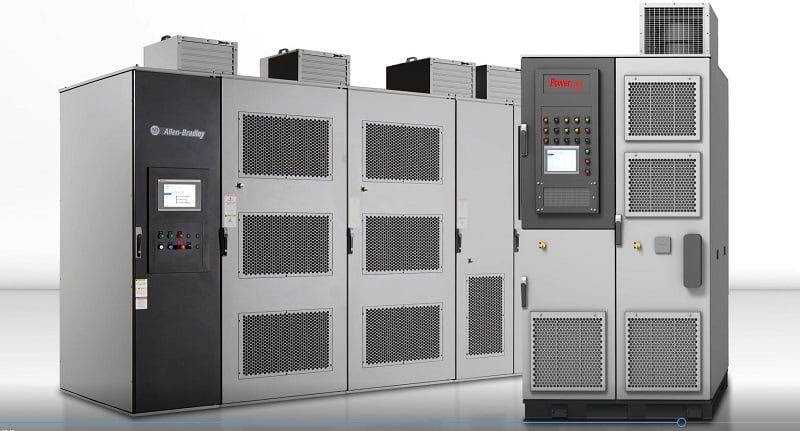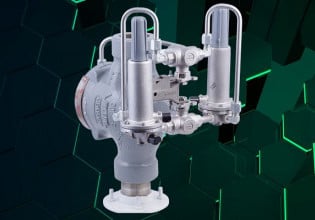Driving Motors Faster: Rockwell’s New PowerFlex 6000T VFD
Increasing motor speed is critical in many situations, but it also poses serious risks in both electrical and mechanical performance if not driven properly. Enter Rockwell Automation’s new PowerFlex 6000T.
Motor speed is always displayed on the data plate fixed to the side of the case. This data indicates the maximum speed of the motor when supplied with the local industry standard of 50 or 60 Hz. For large 3-phase motors, the power output at this speed can be tremendous.
Many industrial applications, including pumps, compressors, turbines, and fans, can require rotational speeds above the listed rating on the motor data plate. It can be tempting, with the digital abilities of variable frequency drive (VFD) technology, to simply increase the output waveform reconstruction frequency (Hz value) and raise the speed. But this does not come without serious concerns.

Rockwell Automation’s PowerFlex6000T Medium-Voltage VFD. Image used courtesy of Rockwell Automation
Rockwell Automation has introduced the new series of PowerFlex 6000T medium-voltage drive VFDs to safely drive motors faster while addressing mechanical and electrical concerns through advanced drive technologies.
VFD with Higher Output Frequency
The PowerFlex 6000T has a maximum output frequency of 120 Hz, sufficient for double the standard speed of both 50 and 60 Hz regional operating systems.
A special concern is addressed with the control structure of this VFD, making it more effective for 3-phase power delivery systems. VFDs rely in part on the principle of conversion of AC into DC using rectification through diode bridges. When a large amount of current is required from the input to the output, especially at perfect multiples of the supply frequency, it can cause serious effects on the supply voltage main lines.
These perfect multiples of the supply frequency are called ‘harmonics,’ and the distortion of the supply voltage is then naturally called ‘harmonic distortion.’
The PowerFlex 6000T series reduces harmonic distortions by raising the number of pulses in the diode configuration, creating a phase-shifting effect to minimize total harmonic distortion, saving losses on the main and load side, as well as reducing the need for external reactor components.
Advanced Control Modes and Operation
The PowerFlex 6000T series can drive motors with or without feedback encoders using a variety of industry-standard control modes, including flux vector and V / Hz operation.
Interface with this drive unit is accomplished with the 10” touch screen eHMI on the face of the unit.

Rockwell’s PowerFlex6000T VFD uses an eHMI for advanced operator control. Image used courtesy of Rockwell Automation
Programmers will find integration simple with the Add-On Profile (AOP) for the Logix Studio environment for the ControlLogix and CompactLogix hardware controllers, as well as a Connected Components Workbench profile for integration with the smaller series of Micro800 PLCs and included hardware peripherals.
Critical System Monitoring and Metrics
The PowerFlex 6000T VFD can also track and trend many important parameters of the power system, useful for indicating future problems and preventing catastrophic, costly failures. Some of the included monitoring parameters are power (kW, kVA, and kVAR), total power consumption (kW-hr and MW-hr), and power factor. Additionally, current and voltage are continually measured for both the line and load sides of the drive.
Operational intelligence algorithms included as part of Rockwell’s TotalFORCE technology package can analyze all of the above parameters to provide preventive and predictive maintenance diagnostics. This increases uptime in addition to removing minor failures which reduce efficiency driving up energy costs.
Advanced 3-Phase Motor Control
As motion demands increase across every industry, the goal of drive technology will continue to be more monitoring and data collection for increased efficiency while simultaneously increasing output speed and performance. This places demands on manufacturers like Rockwell, who strive to keep delivering VFDs that meet these objectives under challenging conditions with reliability and superior performance.






